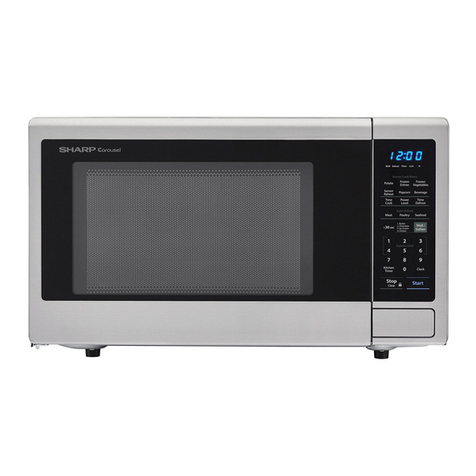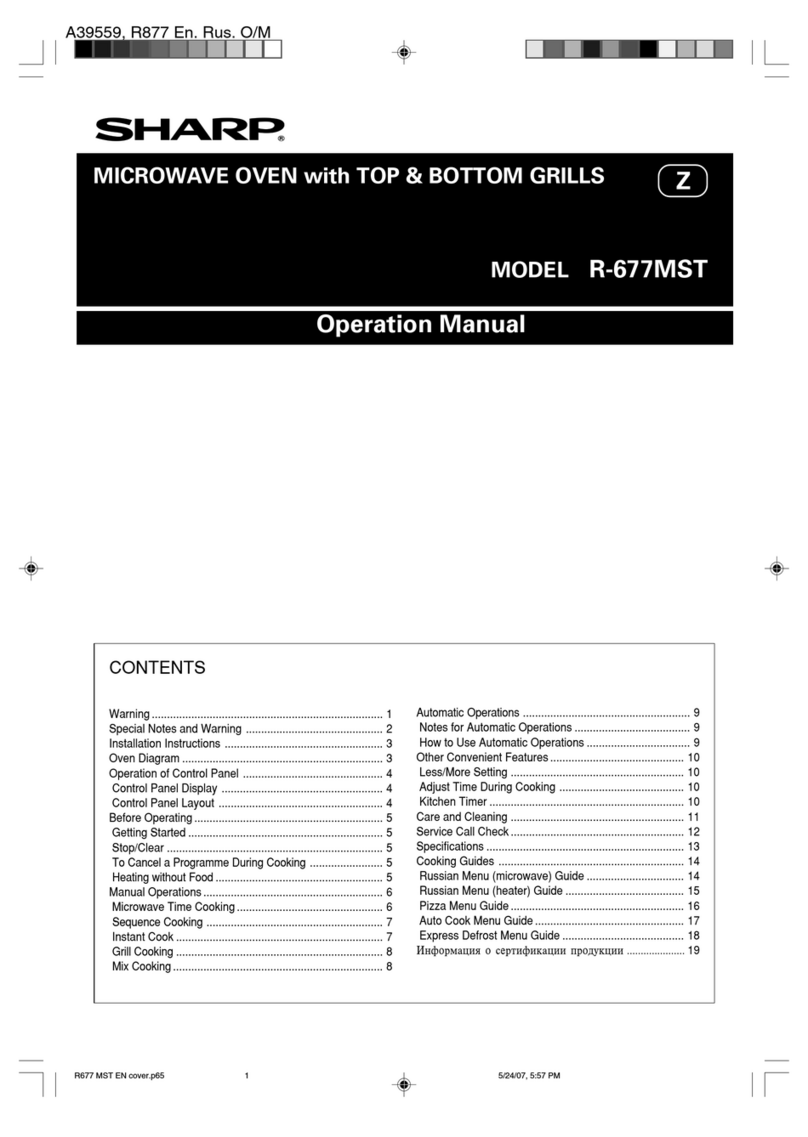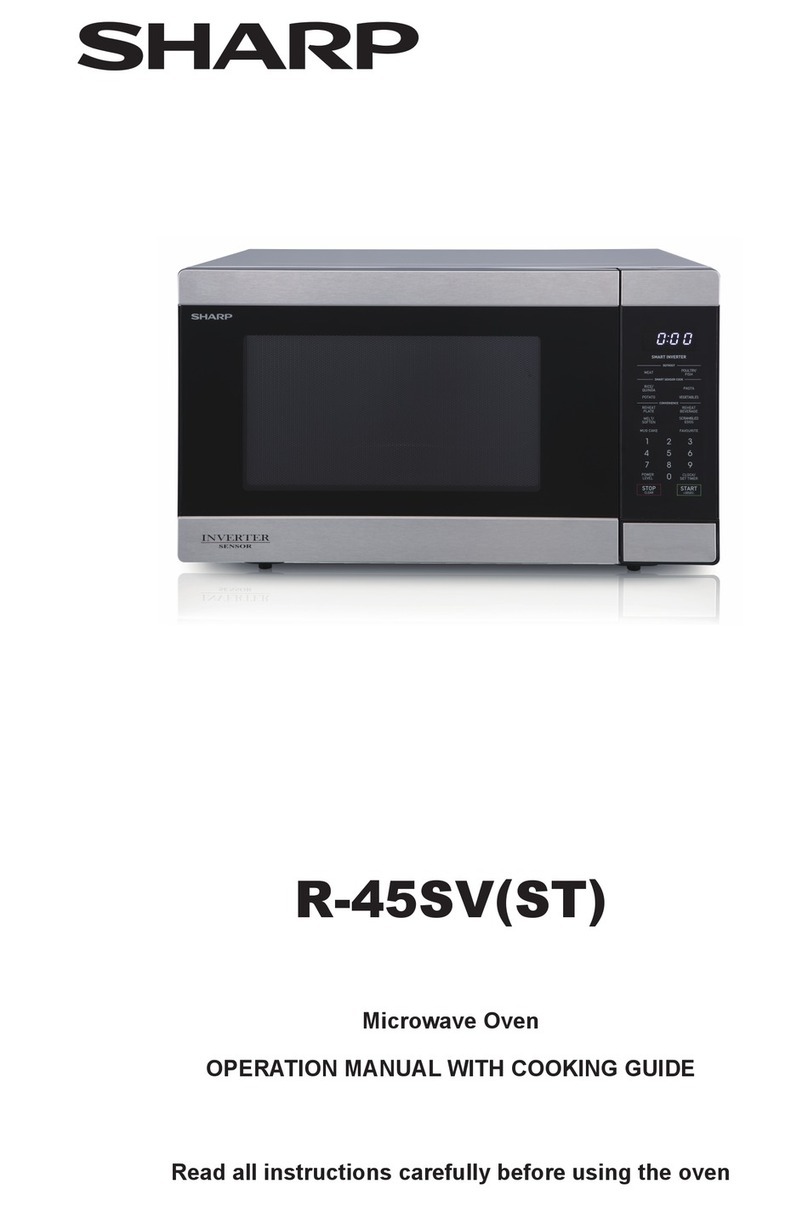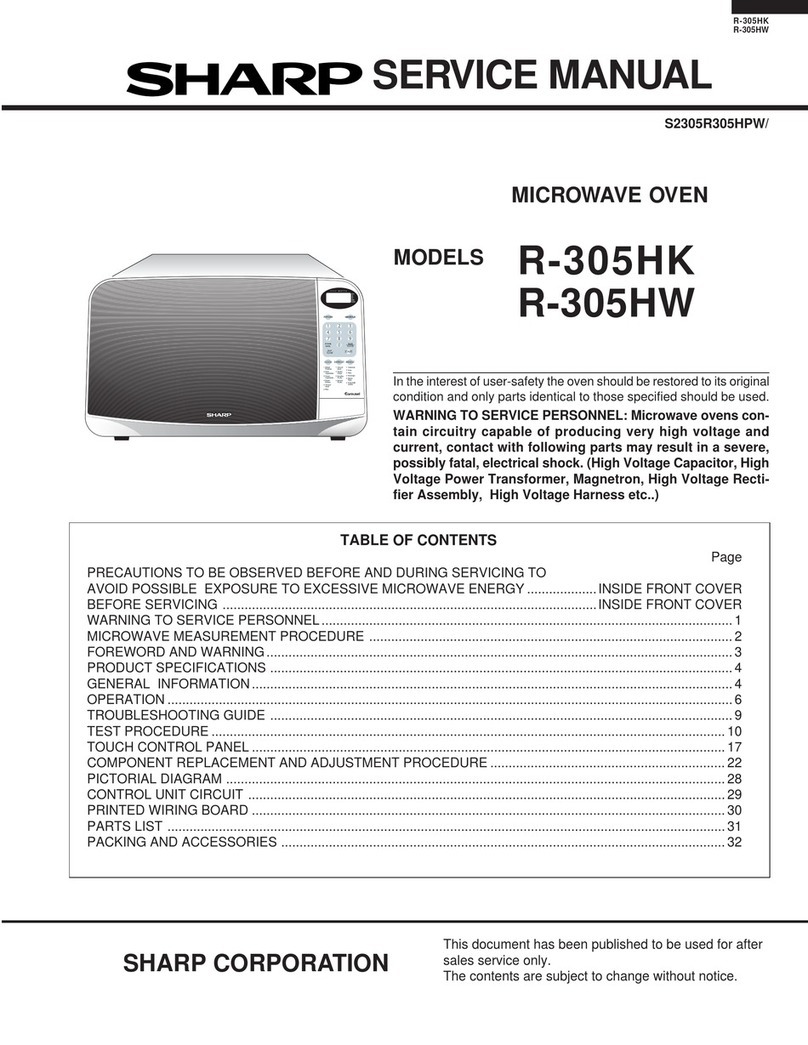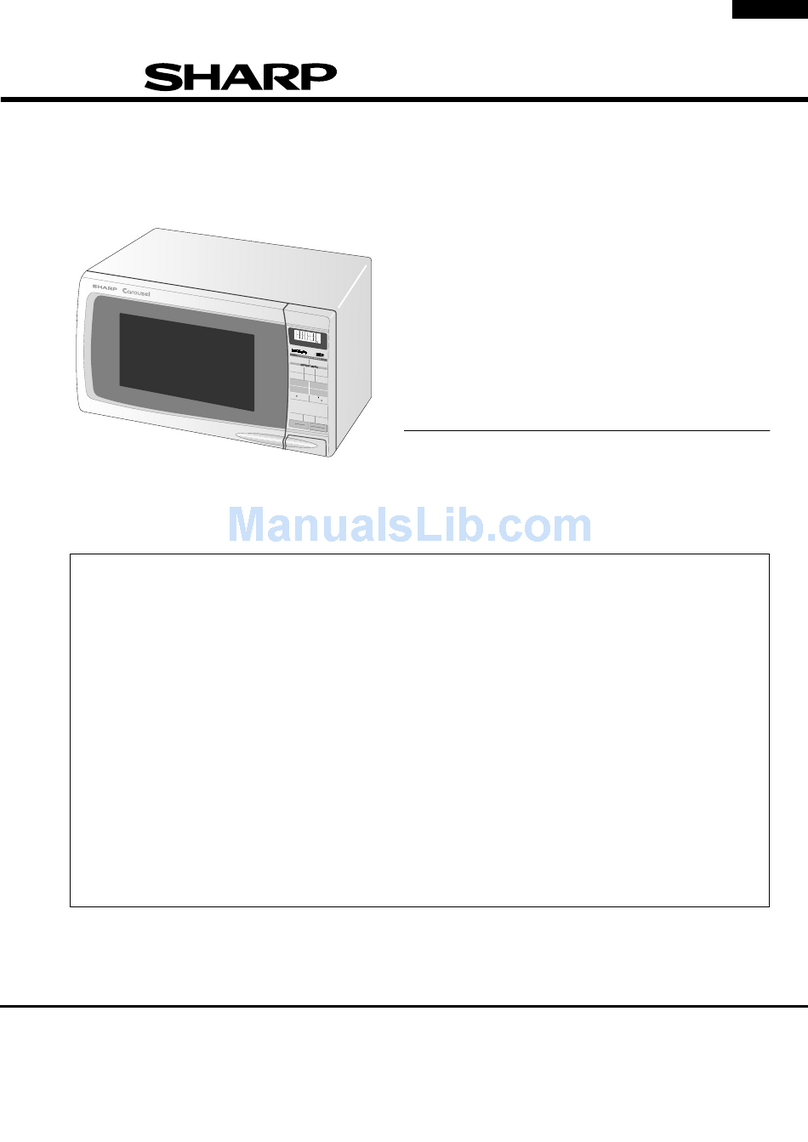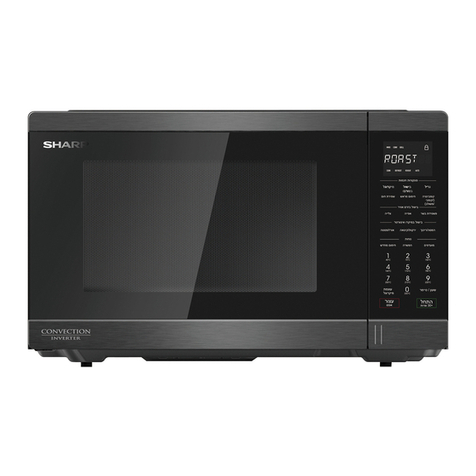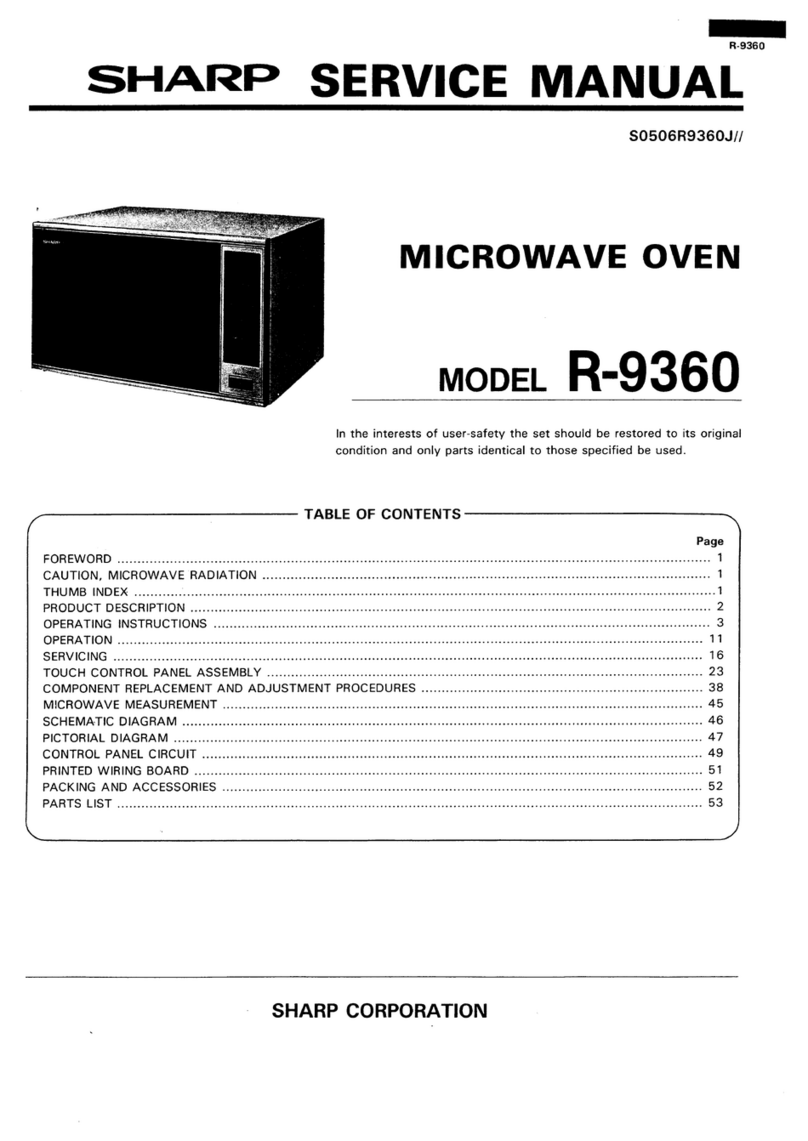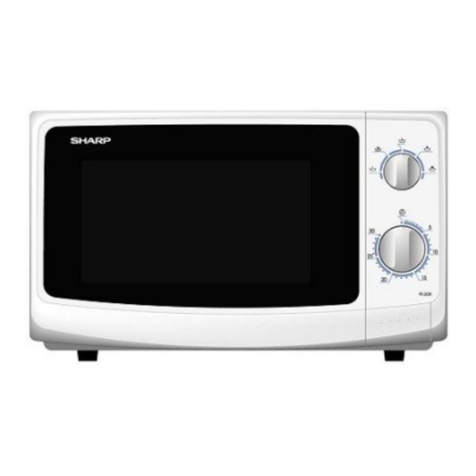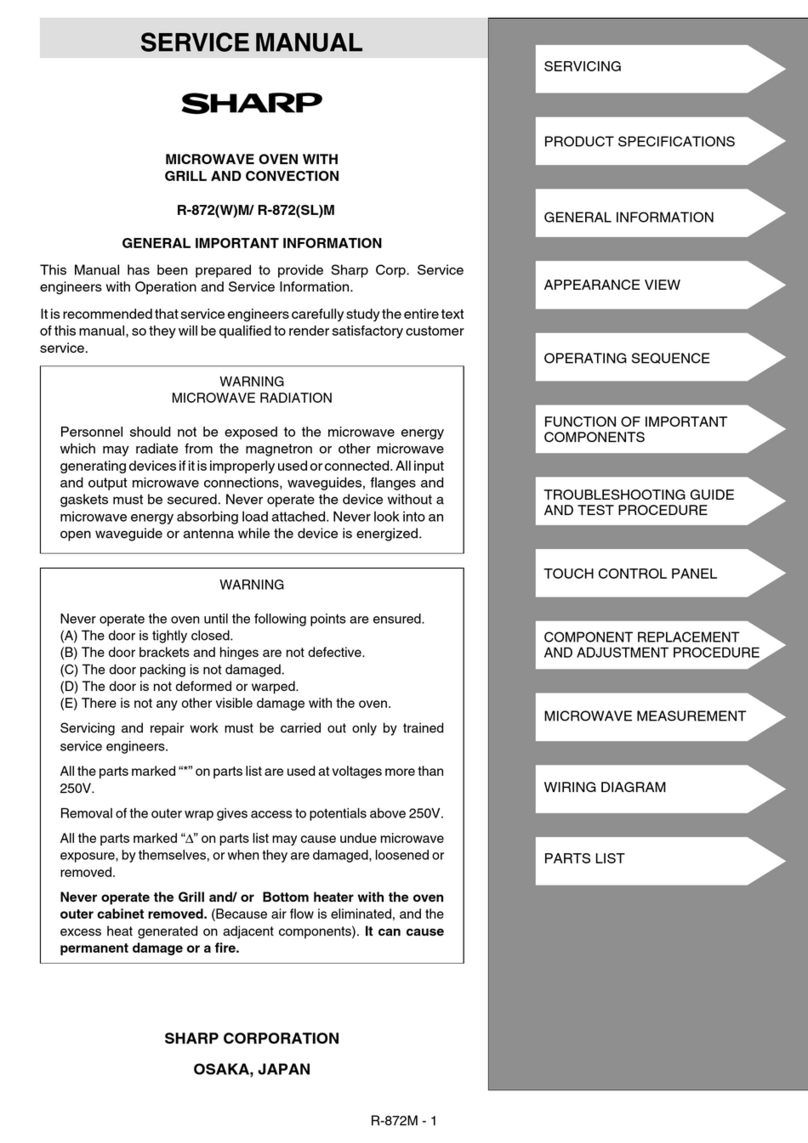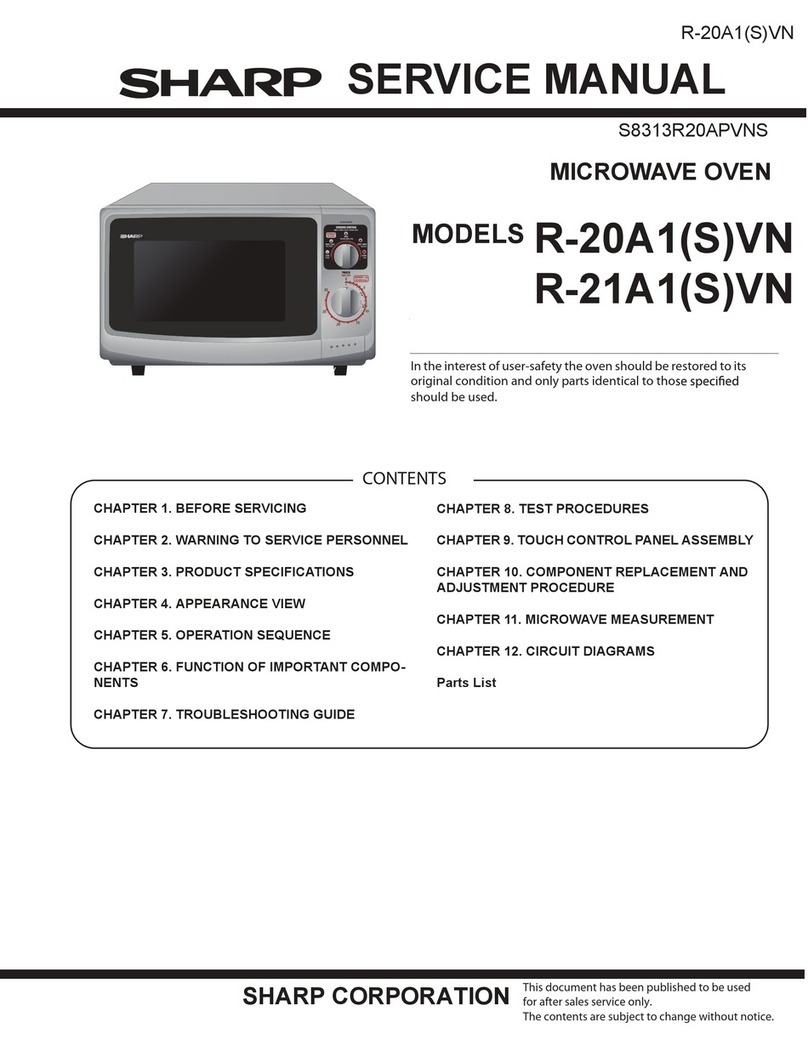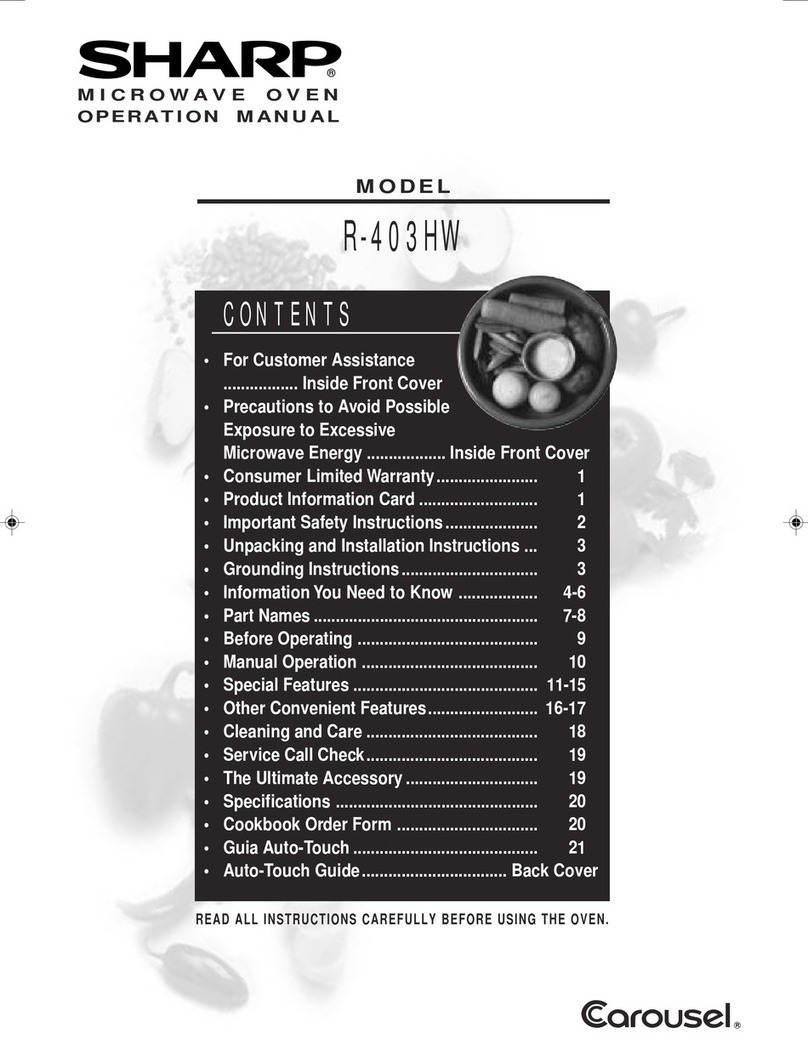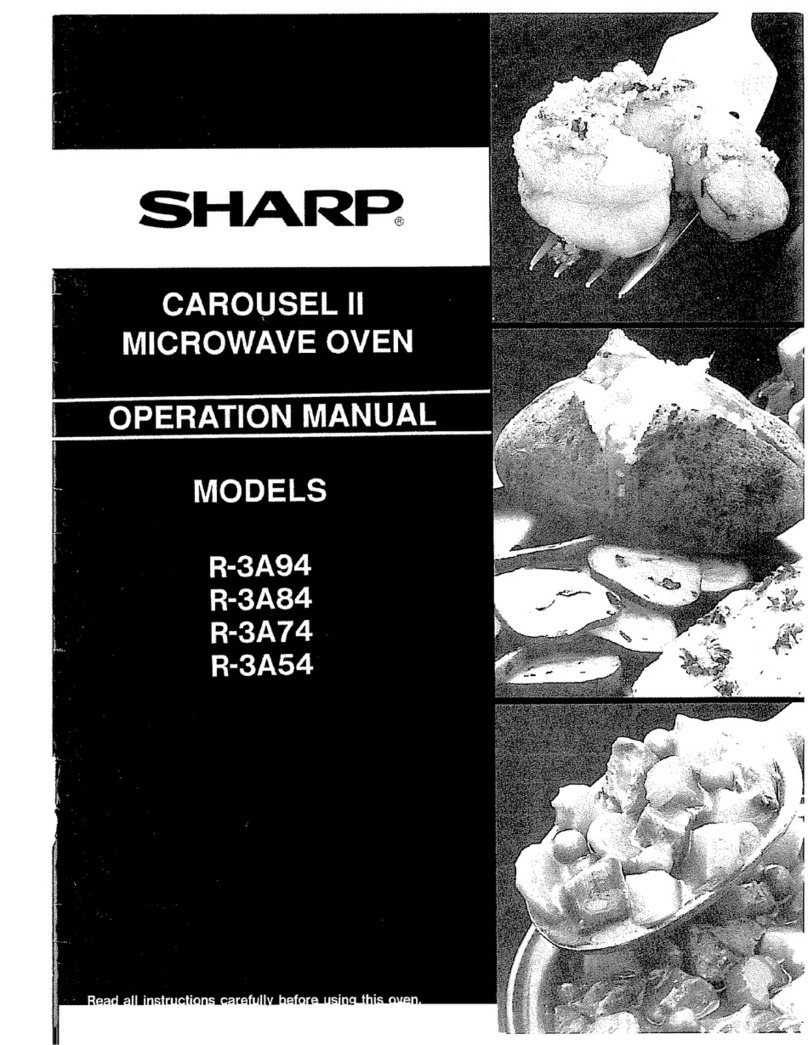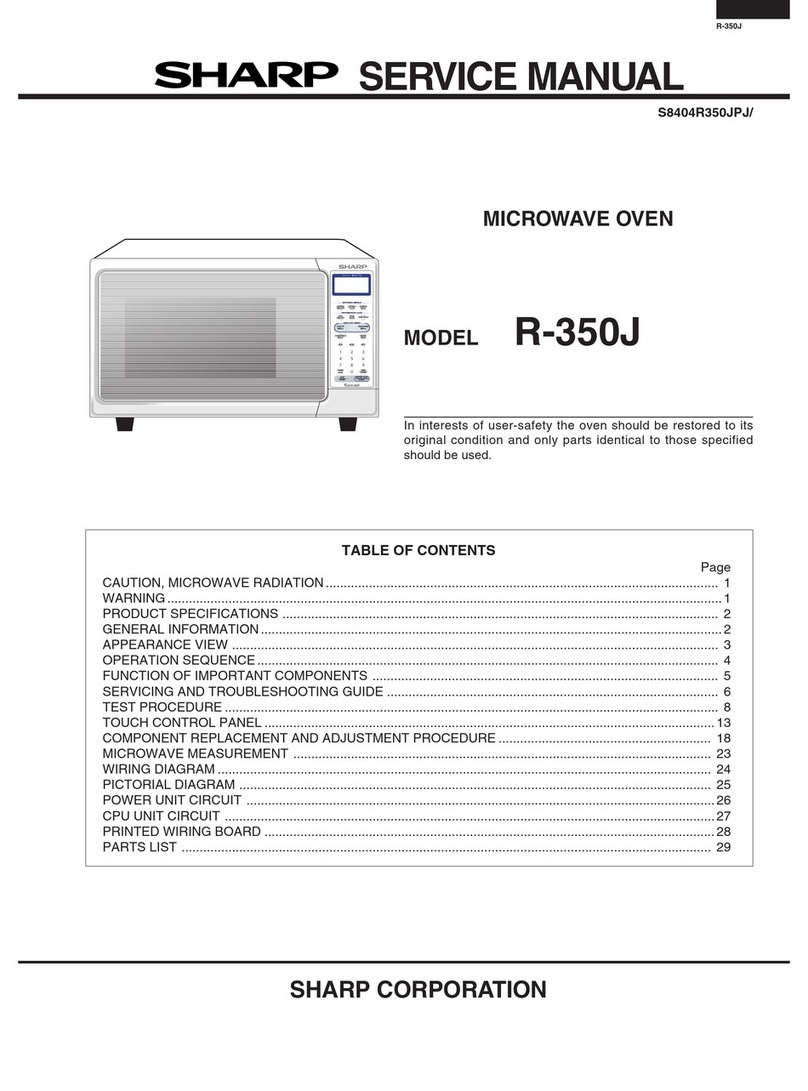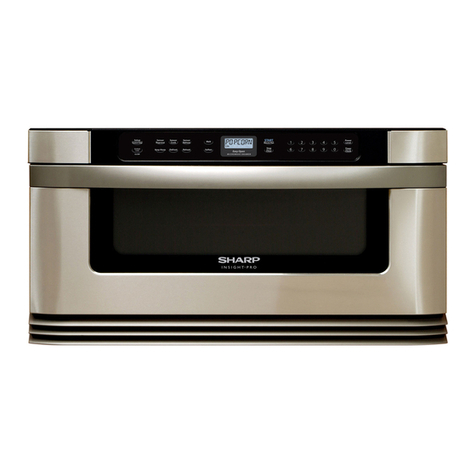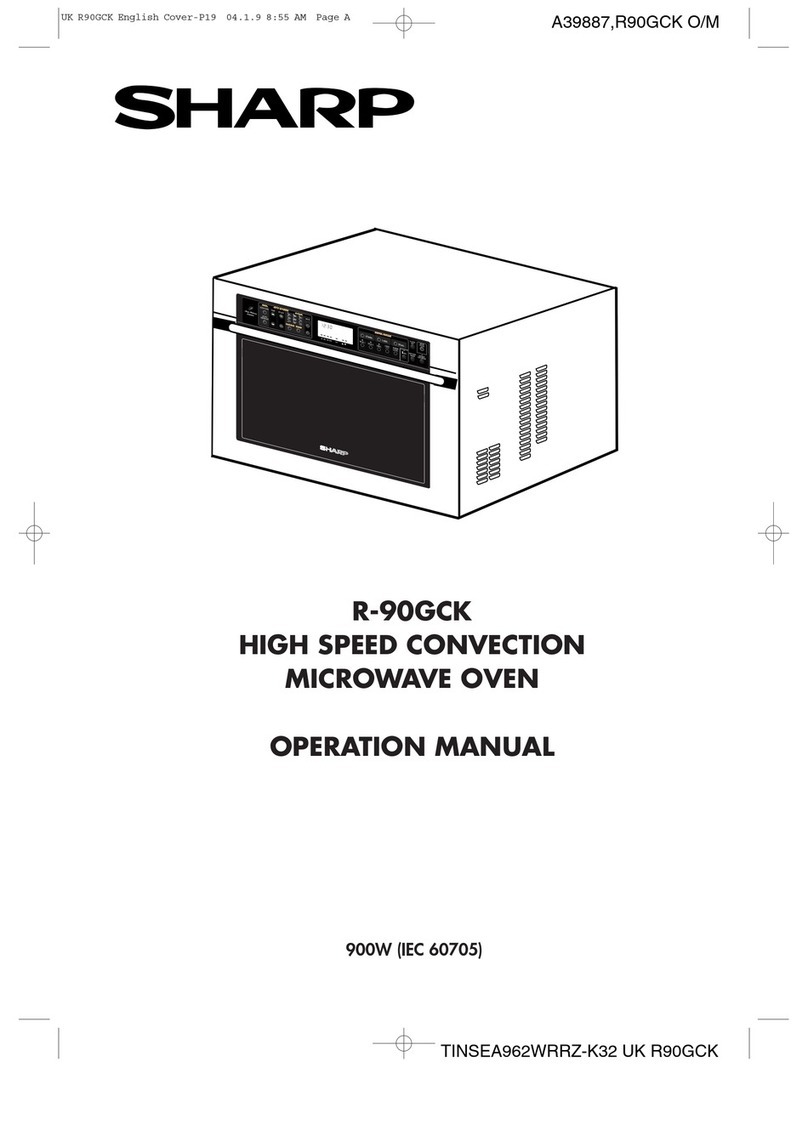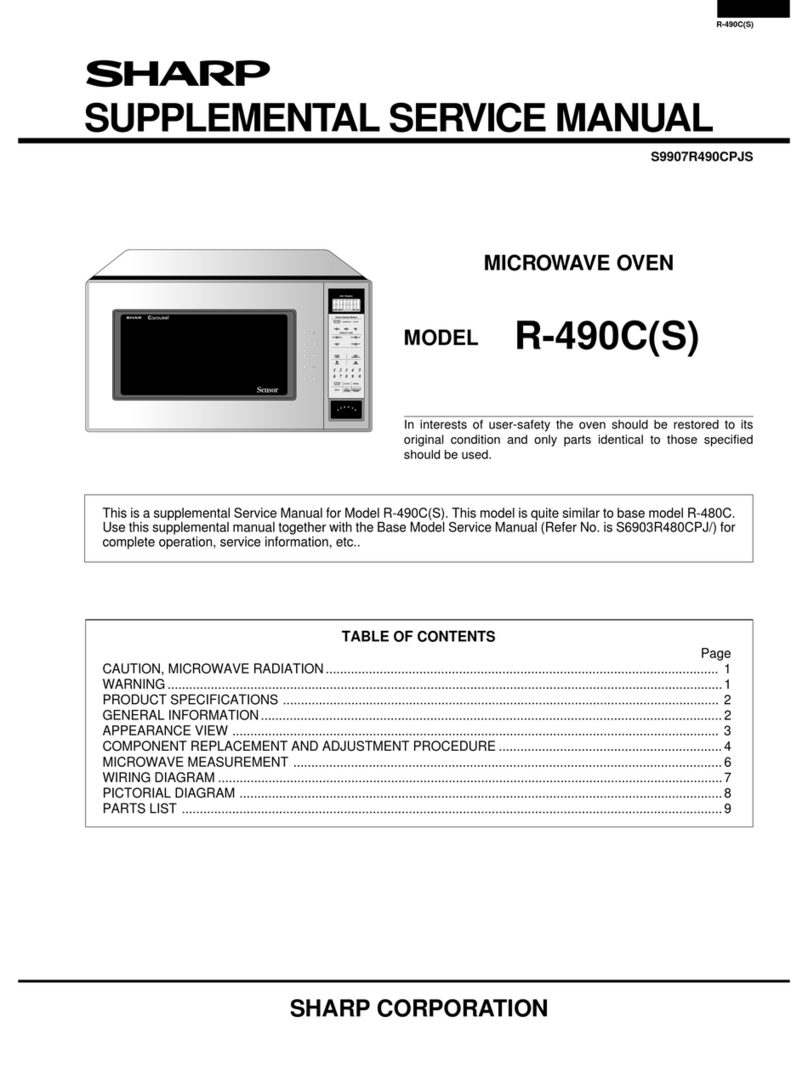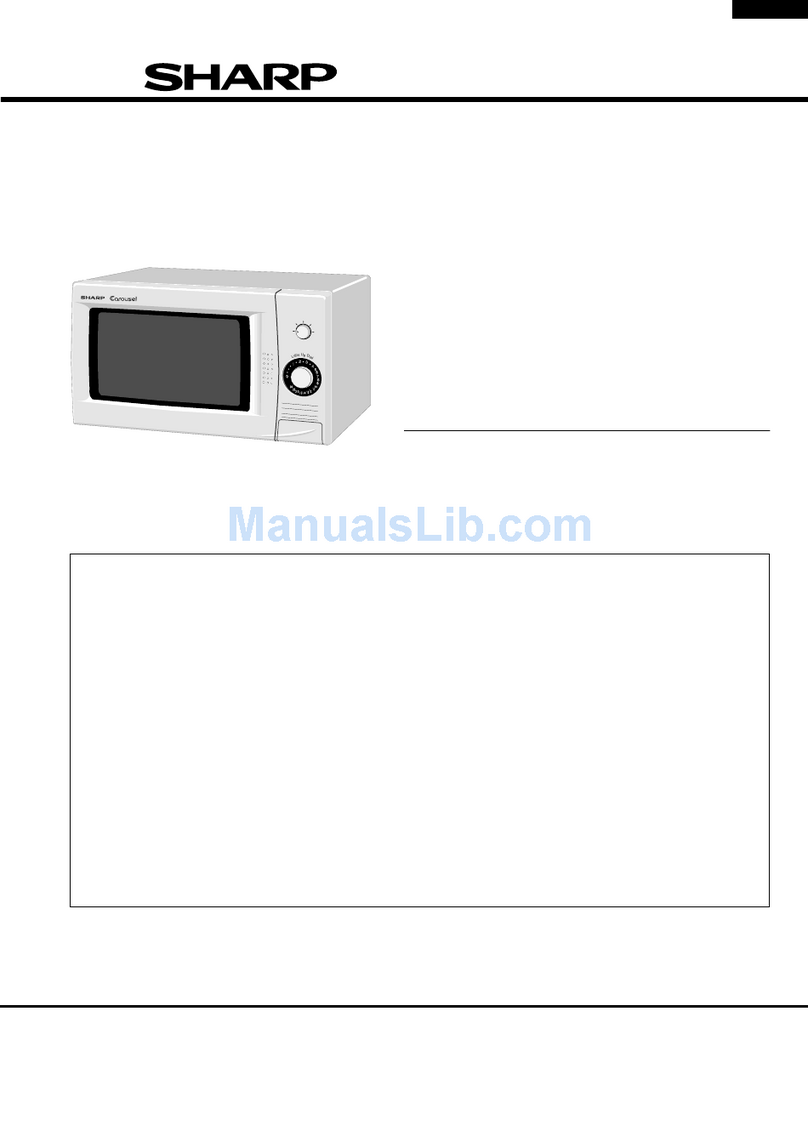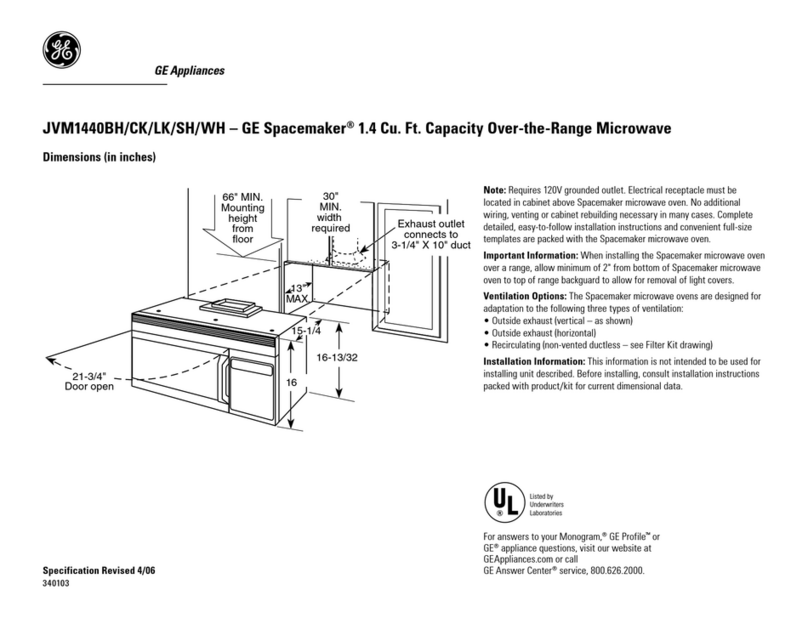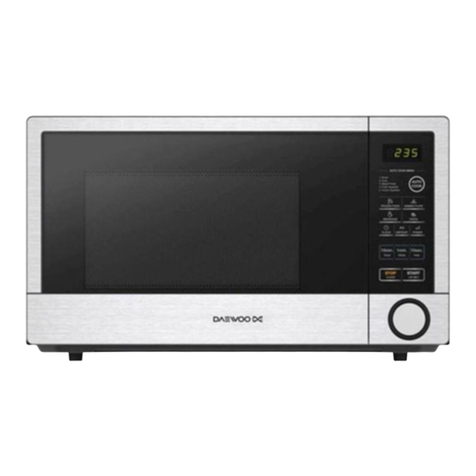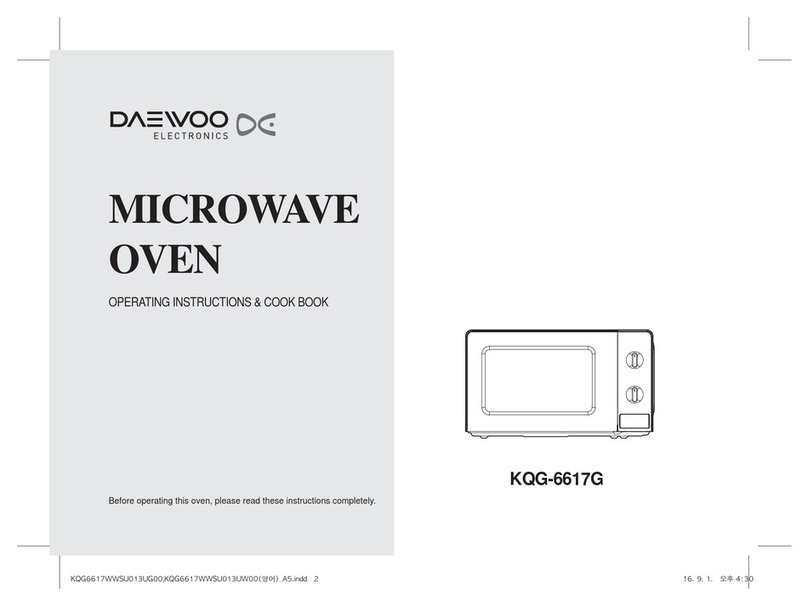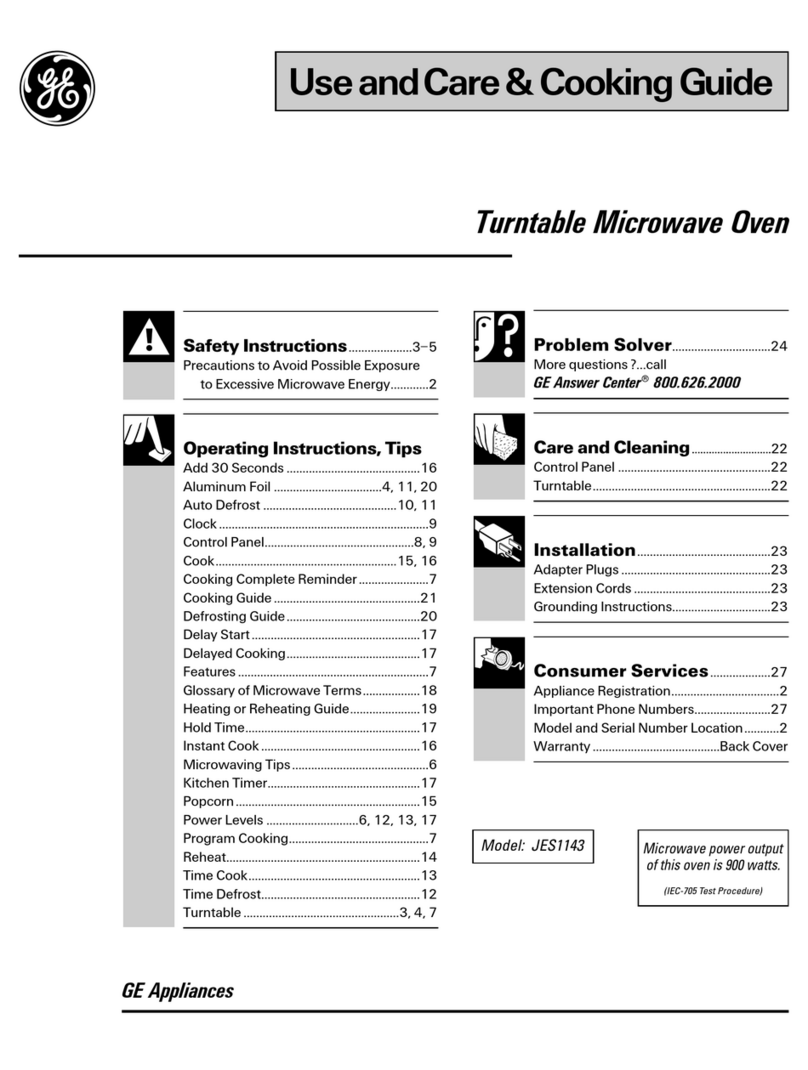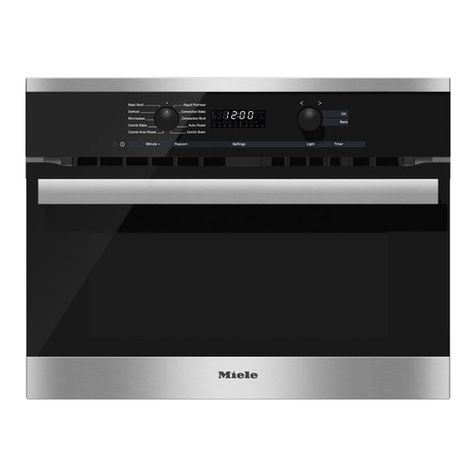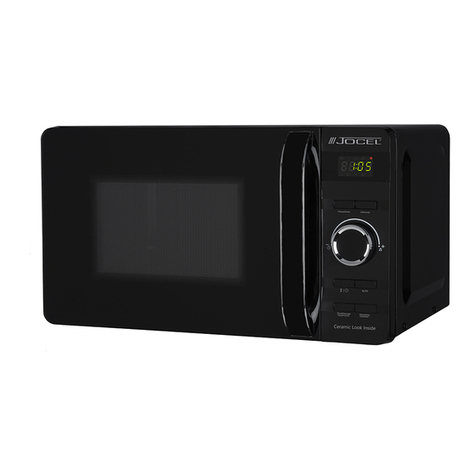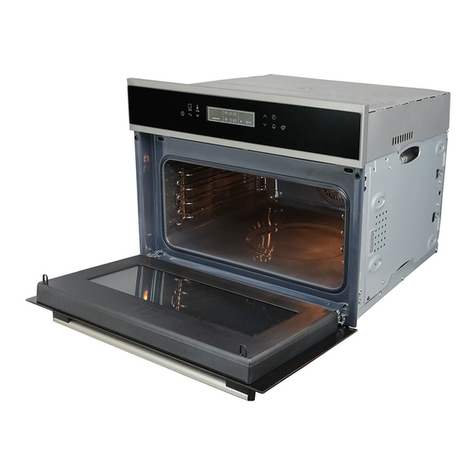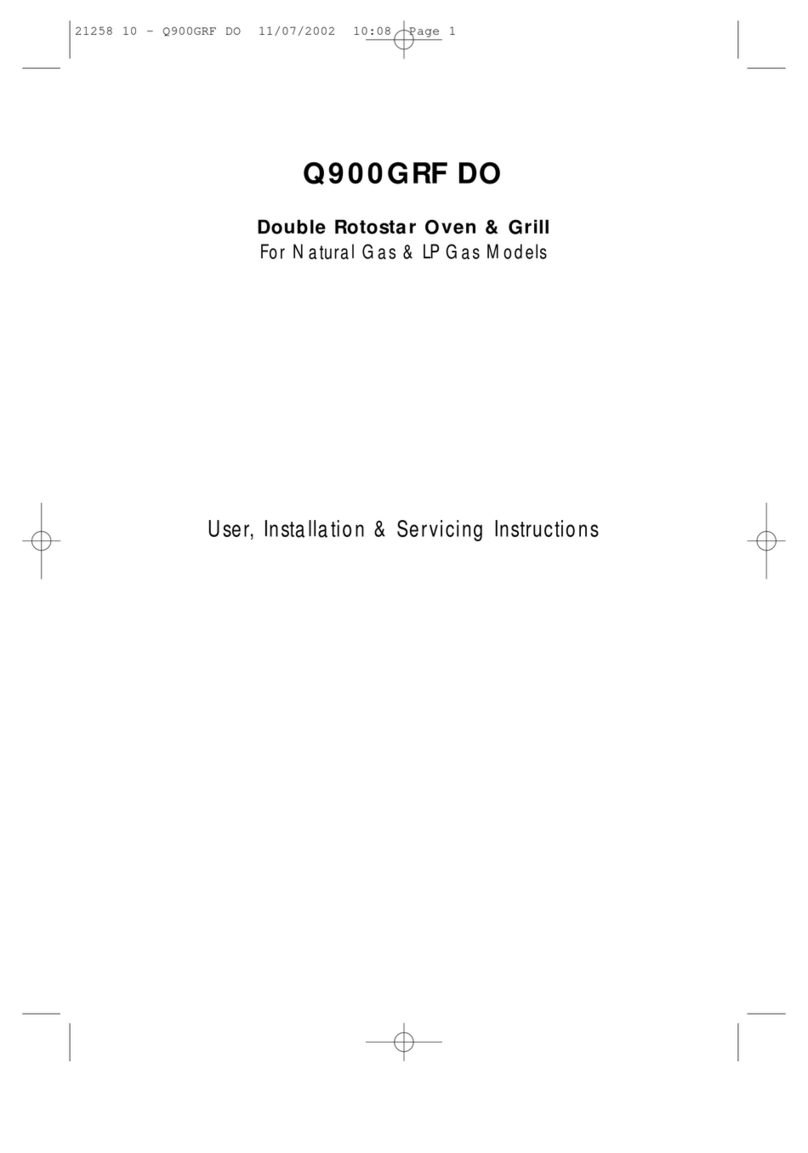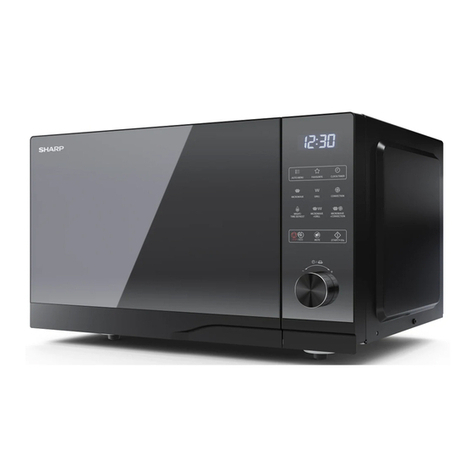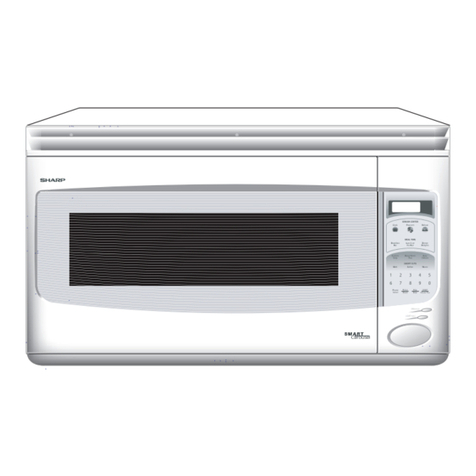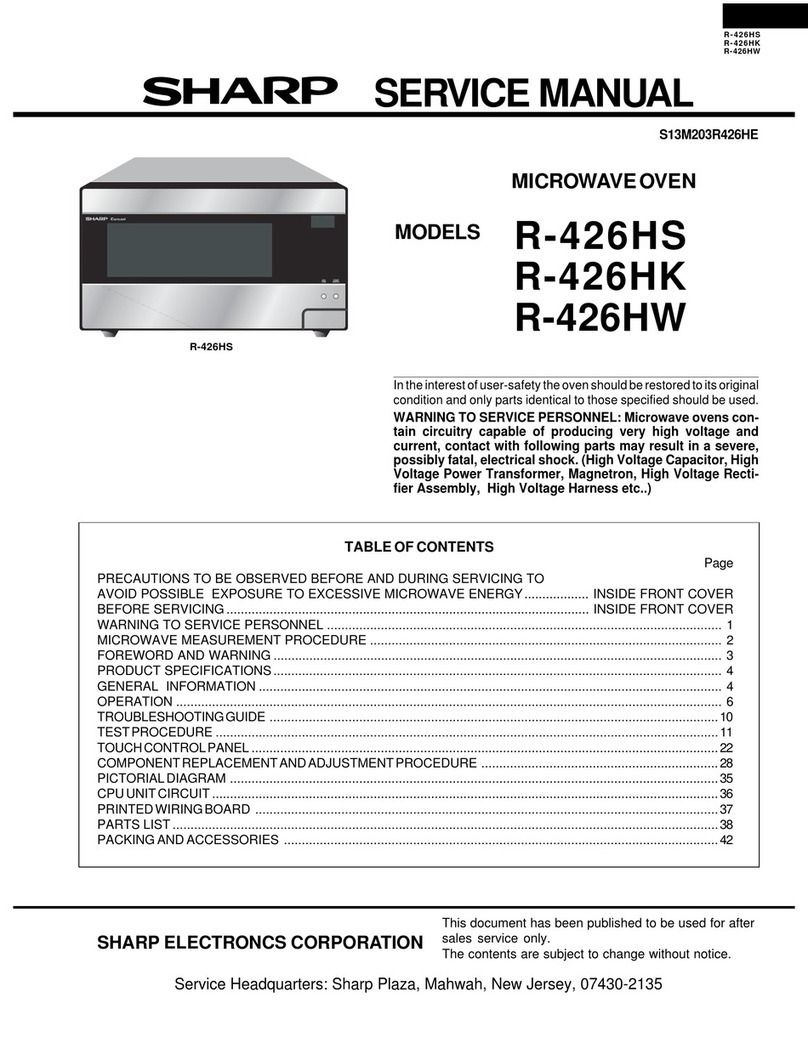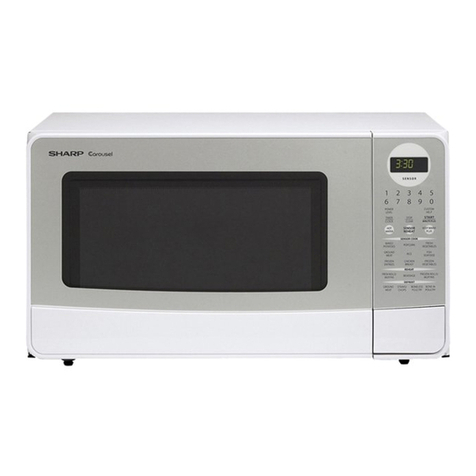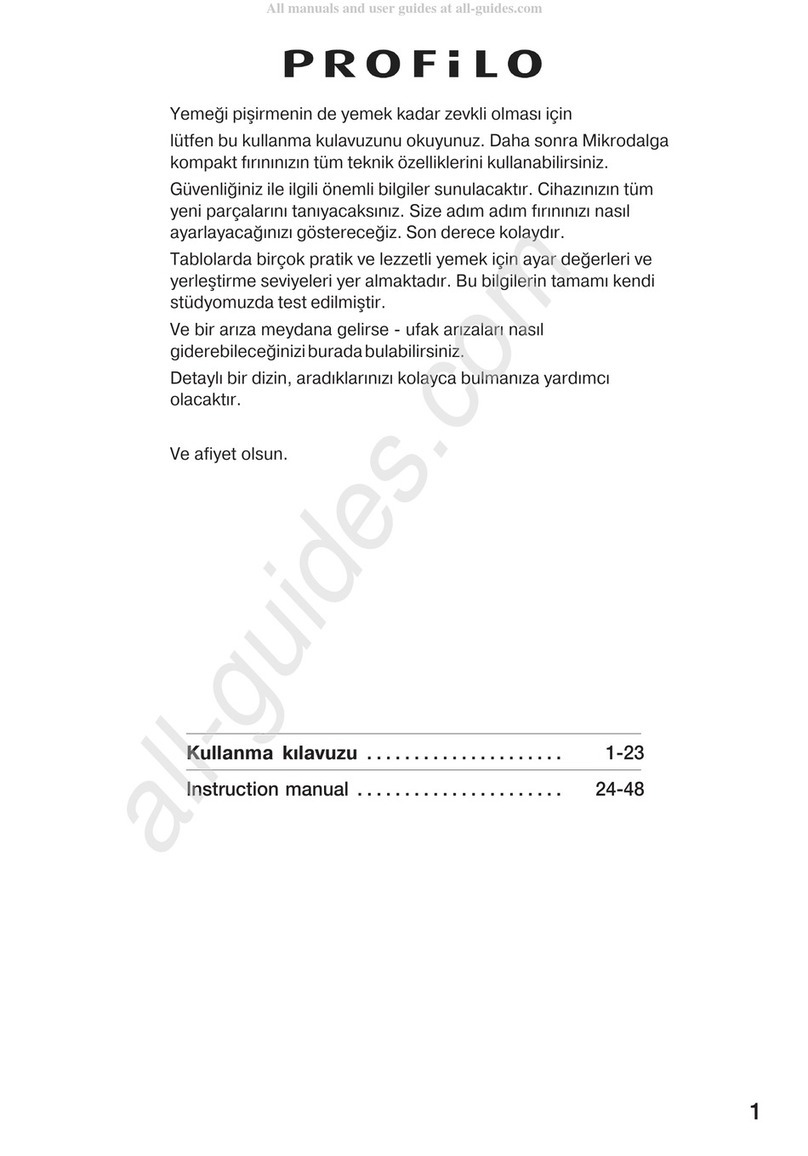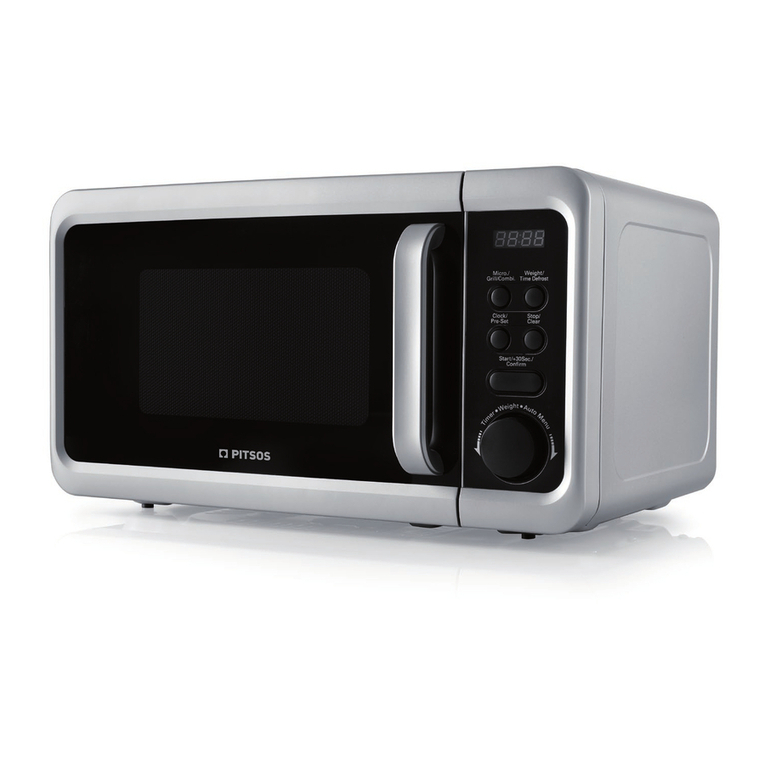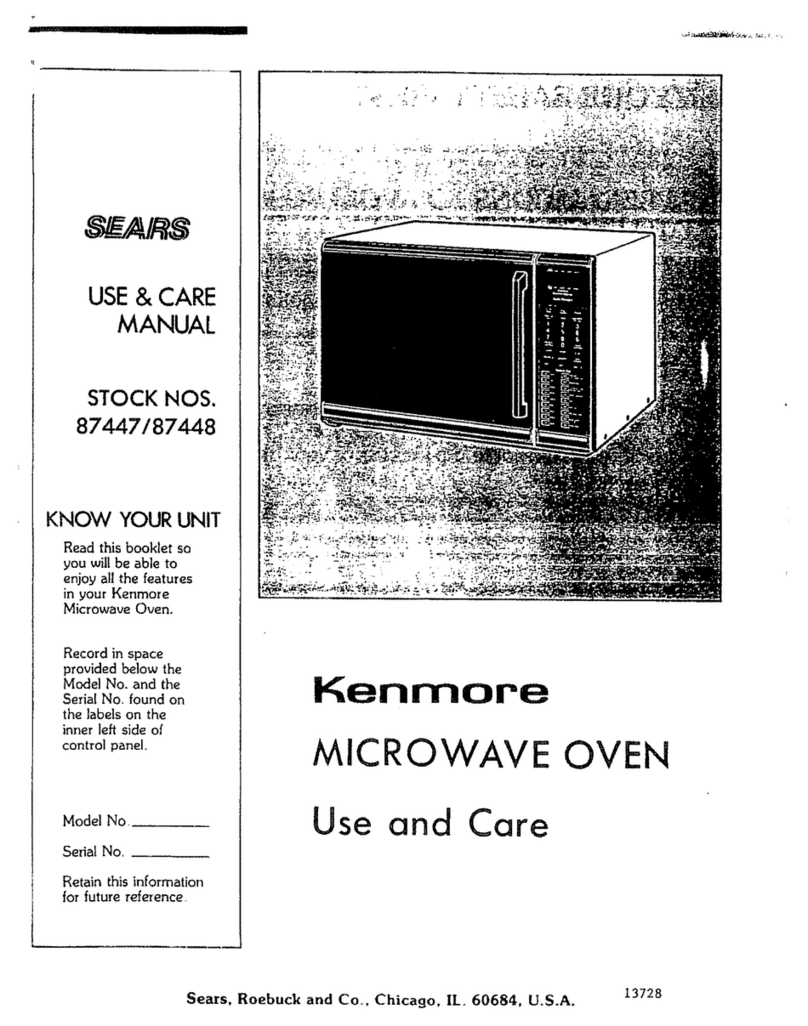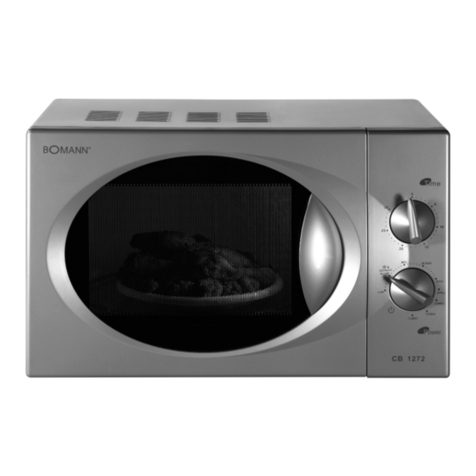R-9H56
6
AH SENSOR COOKING SEQUENCE
1. In case the AH sensor cooking condition is started, the
coil of shut-off relays (RY1+RY6) are energized, the
oven lamp and cooling fan motor are turned on, but the
power transformer is not turned on.
NOTE: The oven should not be operated on AH SENSOR
COOKING immediately after plugging in the unit.
Wait five minutes before cooking on AH SENSOR
COOKING CONDITION.
2. Afterabout16seconds,thecookrelay(RY2)isenergized.
The power transformer is turned on, microwave energy
is produced and first stage is started. The 16 seconds is
thecoolingtime required toremoveany vapour fromthe
oven cavity and sensor.
Figure O-2
NOTE: Duringthisfirststage,donotopenthedoorortouch
STOP/CLEAR pad.
3. TheovenwillgototheMixCookingConditionatthe2nd.
or 3rd. stage when Reheat pie, Casseroles or Desserts
has been chosen. (Figure O-4)
4. When the sensor detects the vapour emitted from the
food,thedisplayswitchesovertothe remaining cooking
time and the timer counts down to zero. At this time, the
door may be opened to stir food, turn it or season, etc.
NOTE: Incasewhereasmallquantityoffoodiscooked,the
oven will stop without displaying the remaining
cooking time.
5. Whenthe timer reaches zero, an audible signal sounds.
The shut-off relay (RY1+RY6) and cook relay (RY2) are
de-energized and the power transformer, oven lamp,
etc. are turned off.
6. OpeningthedoorortouchingtheSTOP/CLEARpad,the
timeofdaywill reappear onthedisplay and theovenwill
revert to an OFF condition.
MULTI COOK
MULTI COOK will automatically compute the oven tem-
perature,microwavepowerandcookingtimeforbakingand
roasting. Set the desired program by touching the MULTI
COOK pad, and number pad. Enter the weight by touching
the Number pads. When the START pad is touched, the
following operations occur:
1. TheCOOKindicatorwilllightandtheMicrowaveSymbol
and/or the Convection Fan Symbol will rotate.
2. The cooking time will appear on the display and start
counting down to zero. The cooking time is adjusted
automatically according to the weight of the food.
3. The shut-off relays (RY1, RY3, RY5 and RY6) are
energized, turning on the oven lamp, turntable motor,
cooling fan motor and convection motor. The power
supply voltage is added to the convection heater.
4. Now, the oven is in the convection cooking mode.
5. Whentheoventemperaturehasreachedtheprogrammed
convection temperature, the oven goes into the
programmed cooking mode.
6. At the end of the MULTI COOK cycle, the damper is
returned to the open position and the oven will go to the
offcondition.Thecoolingfanwillremainonuntiltheoven
has cooled.
EASY DEFROST COOKING
TheEASYDEFROSTkeyisaspecialfunctionkeytodefrost
meats and poultry faster and better.
EASY DEFROST key has 4 defrost stages.
EASY DEFROST automatically defrosts roast beef, etc.
When EASY DEFROST is selected and the food weight is
entered by using the number pads, the oven will cook
according to the special cooking sequence. (Figure O-2)
FIRE SENSING FEATURE (MICROWAVE MODE)
This model incorporates a sensing feature which will stop
theoven'soperationifthereisafireintheovencavityduring
microwave cooking.
This accomplished by the LSI repeatedly measures the
voltage across the temperature measurement circuit (ther-
mistor) during it's 32-seconds time base comparing the
obtainedvoltagemeasurements.Ifthemostrecent voltage
measuredis300mVgraterthanthepreviousvoltagemeas-
ured, the LSI judges it as a fire in the oven cavity and
switches off the relays to the power transformer, fan motor
and convection motor. The LSI also stops counting down
andclosesthedamperdoorsothatnofreshairwillenterthe
oven cavity. Please refer to the following section for a more
detailed description.
Operation
Please refer to the timing diagrams below.
1. The thermistor operates within a 32-seconds time base
and it is energized for three (3) seconds and off for 29
seconds. Two (2) seconds after the thermistor is
energized, the voltage across the temperature
measurement circuit is sampled by the LSI and twenty
one (21) seconds after the thermistor is cut off the LSI
turns on the cooling fan for six (6) seconds.
2. The above procedure is repeated. If the difference
between the first voltage measured (in step 1) and the
voltagemeasuredwhentheprocedureisrepeated(step
2) is greater than 300mV the LSI makes the judgment
thatthereisafireintheovencavityandwillswitchoffthe
relaystothepowertransformer,fanmotorandconvection
motor.TheLSIalsostops counting downandclosesthe
damper door so that no fresh air will enter the oven
cavity.
ment with each food category and inputted into the LSI.
An example of how sensor works:
1. Potatoesatroomtemperature.
Vapour is emitted very slowly.
2. Heat potatoes. Moisture and
humidityisemittedrapidly.You
cansmellthearomaasitcooks.
;
3. Sensor detects moisture and
humidity and calculates
cooking time and variable
power.
MICROWAVE
MICROWAVE
AH SENSOR

